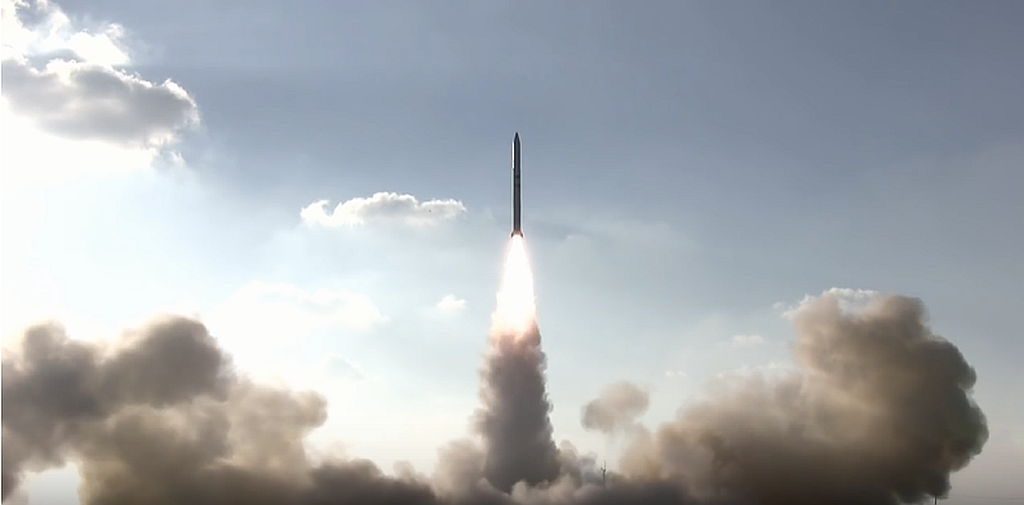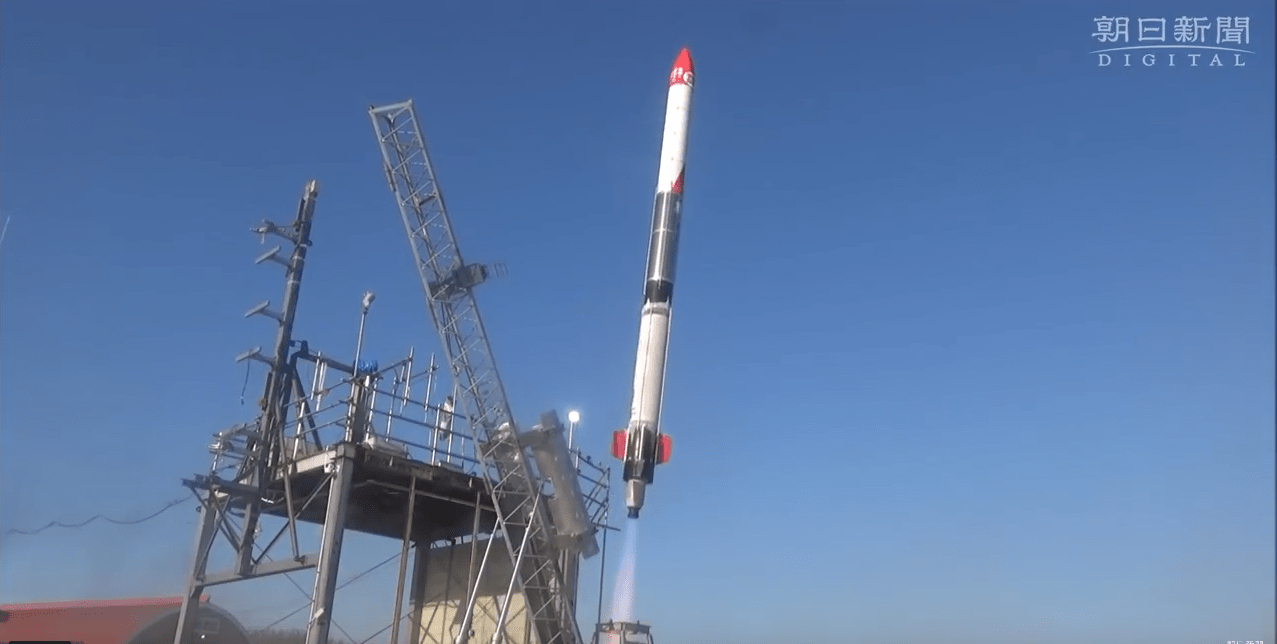There are few things in this world that brings feelings of awe and wonder more than a rocket launch. Watching a literal tower of steel slowly lift off from the ground with unspeakable power reminds us of what humanity can achieve despite our flaws, disagreements, and differences, and for the briefest of moments these magnificent spectacles are capable of bringing us all together regardless of race, creed, and religion.
Continue reading “More Rocket Launches Could Damage the Ozone Layer”Japan’s First Private Rocket Flies to Space
Have you heard of Interstellar Technologies? They’re the latest private company to launch their own rocket into space. They’re a Japanese company, and like other private space companies, their stated goal is to lower the cost to access space.
Continue reading “Japan’s First Private Rocket Flies to Space”Astronomy Cast Ep. 481: Rockets pt. 3 – Going Faster, Higher, Farther after Fairing Separation
We’ve seen rockets blast off from here on Earth. But that’s only half the story. Rockets have additional stages to push them into trajectories, like transfer orbits and various orbital maneuvers. Let’s talk about what happens after the rocket is long gone, beyond our sight.
We usually record Astronomy Cast every Friday at 3:00 pm EST / 12:00 pm PST / 20:00 PM UTC. You can watch us live on AstronomyCast.com, or the AstronomyCast YouTube page.
Visit the Astronomy Cast Page to subscribe to the audio podcast!
If you would like to support Astronomy Cast, please visit our page at Patreon here – https://www.patreon.com/astronomycast. We greatly appreciate your support!
If you would like to join the Weekly Space Hangout Crew, visit their site here and sign up. They’re a great team who can help you join our online discussions!
Israeli Shavit Rocket Delivers Malfunctioning Spy Satellite Into Orbit

Israel launched a Shavit2 rocket from its facility at Palmachim airbase on Sept. 13. The launch was the 10th one for the Shavit rocket system, which had its initial launch in 1988. The launch and delivery were successful, but Israeli media is reporting that the payload, the Ofek-11 satellite, is malfunctioning.
The Ofek-11 satellite in Tuesday’s launch is an optical imaging satellite, basically a spy satellite, operated by the Isreali Ministry of Defence. It operates at an altitude of 600 km. It’s orbital path is designed to pass over Israel’s region 6 times per day, allowing the Ministry of Defence to focus on targets of interest in their nation’s region.
Officials involved with the launch have successfully contacted the satellite. Amnon Harari, head of the Defence Ministry’s Space Department, told the Times of Israel that it was “not clear that everything was in order,” hours after the launch.
Doron Ofer is CEO of the Israel Aerospace Industries’ Space Division, the company that makes the Shavit rocket. He told the Times of Israel that due to the satellite’s path, and the rotation of the Earth, the satellite can only be contacted a few times per day. This complicates efforts to correct the satellite.
“We have downloaded some figures, and we are now checking them. It’s not functioning exactly the way we expected, and we don’t know what it’s status is,” Ofer said. “We are now working to stabilize it, but it will take some time because of the small amount of communication we have with it when it comes in our area.”
The Ofek-11 will be the 11th satellite that provides intelligence to the Israeli forces, but not much is known about its exact capabilities. For obvious reasons, the Israeli Defence Ministry is keeping things secret.
It is widely believed that this newest satellite is among the world’s most advanced satellite recon systems. It’s enhanced imaging system purportedly collects images at a ground resolution of 0.5 meters from its 600-Kilometer orbit.
The Ofek-11 surpasses its predecessor, Ofek-9, launched in 2010, which had only a 0.7 meter resolution. The Ofek-10 was a radar imaging satellite launched in 2014 to capture all-weather, day and night images at a resolution less than 1 meter. The overlapping nature of Israel’s satellite system eliminates any gaps in their ability to monitor their region.
Two weeks ago, Israel had another failure in its satellite efforts, though that one was much more catastrophic. The Amos-6 civilian communications satellite was going to be Israel’s largest satellite to date. However, the SpaceX rocket tasked with taking Amos-6 into orbit exploded on its Cape Canaveral launch pad.
Israel is the 8th country in the world to develop their own orbital launch capabilities. They launched their first satellite, the Ofek-1, aboard the maiden flight of their Shavit-1 rocket in 1988. Including that first launch, Israel has attempted 10 launches, and has been successful 8 times. All of those have been Ofek satellites, operated by the military.
All but one of Israel’s Ofek satellites have been launched by Israel’s Shavit-1 and Shavit-2 rockets. The lone exception is Ofek-8, also known as TecSar, launched aboard the Indian Polar Satellite Launch Vehicle (PSLV).



